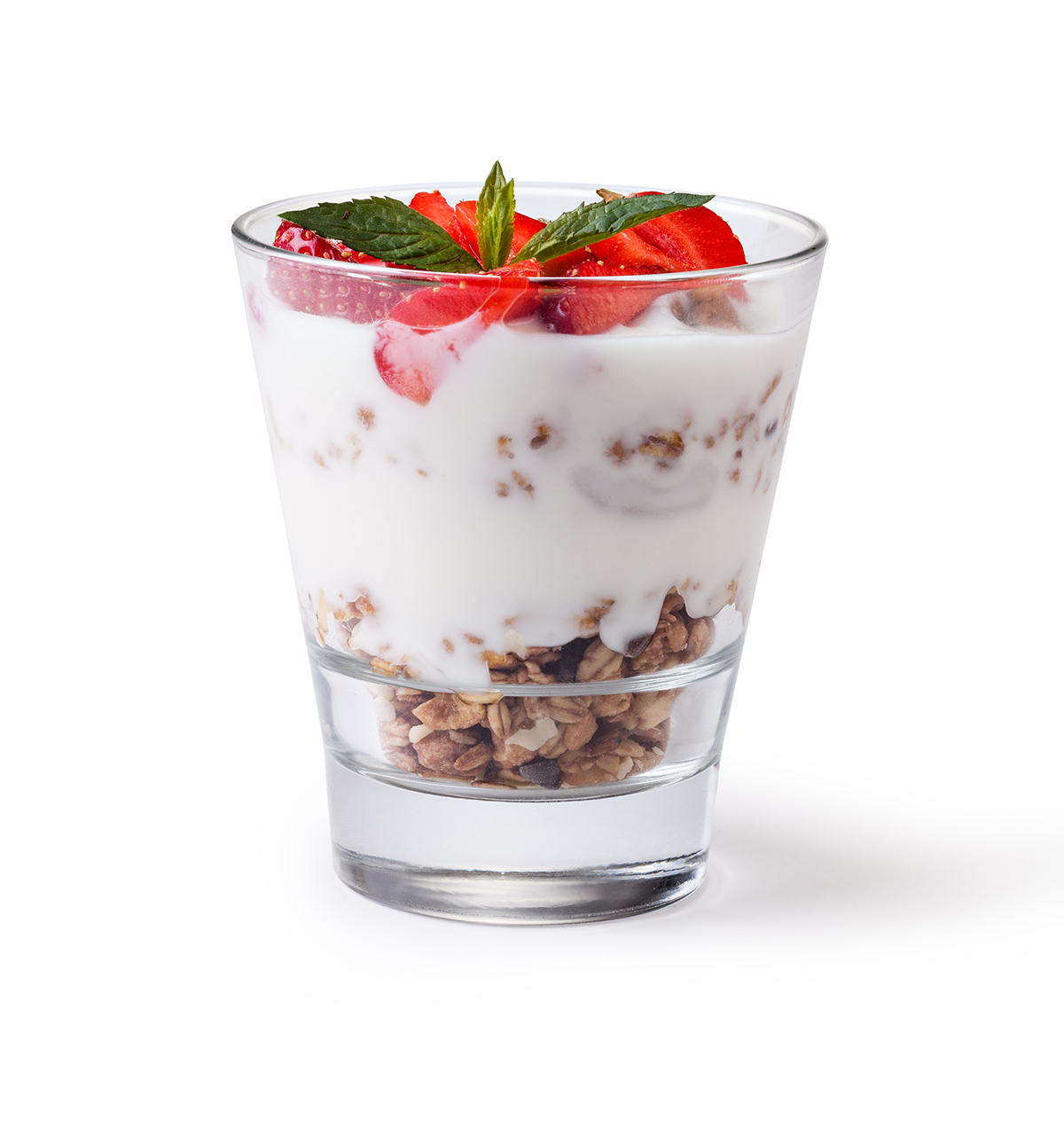What is Galactose?
Galactose is a simple sugar (monosaccharide) like glucose, but with a lower glycaemic index, which keeps blood sugar levels stable.
Galactose is derived from milk sugar (lactose). It is naturally found in fermented dairy products such as yogurt and kefir, and in very small quantities in artichokes, mushrooms, papayas, and tomatoes. Also found in breast milk, galactose provides the foundation for important early brain developments after birth.
Even though galactose is derived from lactose, it is easily digestible for people with a lactose intolerance.
Galactose is slightly less sweet than classic sugar and helps create a balanced flavour when combined with other Dr Coy’s sugars.
Galactose at a glance
- Prevents high blood glucose levels
- Reduces risk of lifestyle diseases
- Prevents premature memory loss
- Lowers HbA1c blood glucose marker indicative of reduced sugar damages
- Switches on fat burning
- Low-calorie
- Prevents and inhibits insulin resistance
- Tooth-friendly
- Improves blood fat profile
- Increases good cholesterol

What makes Galactose special
Switches on fat burning
Nourishes the brain and strengthens memory
Tooth-friendly
Balances blood glucose levels

Activate fat burning
Galactose helps burn fat, even while eating. It is metabolised by the body very differently compared to classic sugar.
It essentially ‘forces’ the cell powerhouses (mitochondria) to use fat and oxygen to make fuel. This metabolic difference is immense.
The taste is similar, but the body responds completely differently.
Galactose has the same calorie content as glucose or cane sugar but converting galactose into glucose requires a lot of energy.
As a result, sugar cells don’t like using galactose for fermentation because the cell must invest as much energy as is subsequently released.
This metabolic shift helps the body easily achieve healthy weight management.
Galactose helps train the mitochondria and its use of energy release by oxidative metabolism (Oxidative Phosphorylation) which helps burn fat.
Galactose is an excellent sugar to support a ketogenic diet or fasting. Both ketogenic diet and fasting exhaust the glucose deposits (glycogen) in the body and cause an oxidative metabolism with the mitochondria.
The combination of galactose with ketogenic diet and fasting can be exploited to improve the training of an oxidative metabolism.
Galactose has a low glycaemic index (20), which prevents high insulin levels in the blood. This also prevents the inflammation, organ dysfunction and premature aging caused by insulin activated fat cells.
How does the calorie content of galactose compare to sucrose?
Using the classic ‘a calorie is just a calorie model’ (developed in 1848) it’s hard to see the benefits of galactose, but when we revise the model to reflect reality, we can see why it energises us very differently.
Galactose is broken down through a process called the Leloir metabolic pathway.
This process releases energy slowly and steadily, providing a sustained fuel source that prevents spikes and dips in blood sugar levels.
This helps you feel energized for longer periods of time.
The body extracts energy from food using two completely different pathways:
| Classic Calories | Fermenting Calories | Oxidising Calories | |
|---|---|---|---|
| Galactose | 4 kcal / g | 0 kcal / g | 4 kcal / g |
| Sucrose | 4 kcal / g | 4 kcal / g | 4 kcal / g |
Oxidising (using oxygen to release pure energy)
Making Energy from Metabolism
- Galactose requires more energy to process.
- It uses the Leloir metabolic pathway.
- Energy is released slowly and steadily.
- Forces cell powerhouses (mitochondria) to burn fat.
- Increases respiration (using oxygen) to make energy.
Slow-Release Energy
- The gradual energy release prevents spikes and dips in blood sugar levels.
- This helps you feel energized for longer periods of time.
- The steady energy release reduces lethargy and cravings.
- The glycaemic index (GI) is 20, which is 70% less than sucrose.
Galactose’s unique metabolic effect makes it ideal for:
Diabetics
Cancer
Children

Memory
Dental
Sports
What scientific evidence supports the use of galactose?
Explore the latest scientific studies and peer-reviewed research on Galactose. Learn more about Dr Johannes Coy’s extensive research in the field of nutrition and metabolic health.
Frequently asked questions
Is Galactose safe?
Yes. Galactose is naturally derived from milk sugar (lactose). It is not an artificial sweetener.
Is galactose good for diabetics?
Yes. Galactose does not increase blood sugar levels or insulin levels. Diabetics can use galactose without worrying about their blood sugar levels spiking.
Is galactose safe for cancer patients?
Yes. Galactose does not trigger a rise in blood sugar levels. It can also reduce the rise of blood sugar levels from sugars consumed along with galactose. Galactose avoids and regulates blood sugar level rises, making it difficult for cancer cells to obtain sufficient glucose from the blood. This weakens the cancer cells and can help make chemo- and radiotherapy more effective.
Nobel Prize winner Otto Heinrich Warburg discovered as early as 1924 that glucose and galactose have a completely different effect on cancer cells. Glucose promotes the fermentation metabolism and the formation of lactic acid which leads to the rapid growth of cancer cells. However, galactose inhibits the fermentation metabolism and formation of lactic acid so that the cancer cells can no longer grow. New studies strongly confirm the anti-cancer and mitochondria-activating effects of galactose.
Is galactose healthy?
Yes. Galactose offers a wide variety of health benefits – while still tasting sweet! Unlike classic sugar, galactose allows us to satisfy our sugar-cravings without any negative health effects.
What is galactose made from?
Galactose is a natural, simple sugar (monosaccharide).
Galactose is derived from milk sugar (lactose). However, unlike lactose, galactose can be tolerated by people with lactose intolerance. Galactose is naturally found in breast milk and integral to early brain development in newborns.
What is the relationship between galactose and glucose?
What does galactose taste like?
Galactose looks exactly like household table sugar. It tastes slightly less sweet than classic sugar. Although galactose has the same calorie content as classic sugar, it uses more energy to process, so the actual calorie content is lower than normal sugar.
Is galactose keto-friendly?
Yes. Galactose can be considered keto-friendly thanks to its low-calorie effect.
Where can I buy galactose?
The best way to incorporate galactose into your diet is by using Dr Coy’s sugar mixtures. These mixtures have been scientifically developed to help lead a healthier lifestyle. Discover the full range of Dr Coy’s sugar mixtures from our partners.
Does galactose raise blood sugar levels?
No. Because galactose takes substantial time and energy for the body to process, this prevents a spike in blood sugar levels. Galactose enables a steady supply of energy to the body, helping improve concentration and mood.
Why is galactose called a ‘brain sugar’?
Galactose is known as a ‘brain sugar’ because it supplies energy to the hippocampus, the part of the brain responsible for memory.
As we age, insulin resistance can impair the glucose supply to the hippocampus. By fuelling the brain with galactose, you can encourage new neurons to form in the hippocampus at a rate of 3-4% per year, thus slowing memory loss and improving cognitive function.
Is galactose digestible?
Research & Resources
The American Journal of Clinical Nutrition published this study proving the fat burning benefits of galactose:
“Galactose consumption is associated with higher endogenous fat mobilization and oxidation during meal absorption”
This study shows the effectiveness of galactose to prevent cavities and improve oral health.
“5.0% galactose reduces the amount of caries on a high significance level, lowers the abrasion of the chewing surfaces, possibly because of the increased amount of serum calcium related to this galactose concentration, and diminishes the amount of film.”
This study tested the effects of a toothpaste made with galactose, which prevented dangerous biofilm growth on bovine teeth.
“Our results suggest that d-galactose can be a candidate substance for the development of oral hygiene products to prevent caries by inhibiting the biofilm formation of S. mutans”
This study proves there is very clear evidence that specific types of dietary sugar are implicated in either feeding, or starving, the spread of cancer.
“In order to test whether TKT’s promotion of colorectal cancer metastasis is dependent on glycolysis, we used galactose which induced cells to survive on ATP provided by mitochondrial respiration instead of glucose.”
Further Studies
- Galactose enhances oxidative metabolism and reveals mitochondrial dysfunction in human primary muscle cells
- Centella asiatica Protects d-Galactose/AlCl 3 Mediated Alzheimer’s Disease-Like Rats via PP2A/GSK-3β Signaling Pathway in Their Hippocampus
- Metabolism of galactose in the brain and liver of rats and its conversion into glutamate and other amino acids

